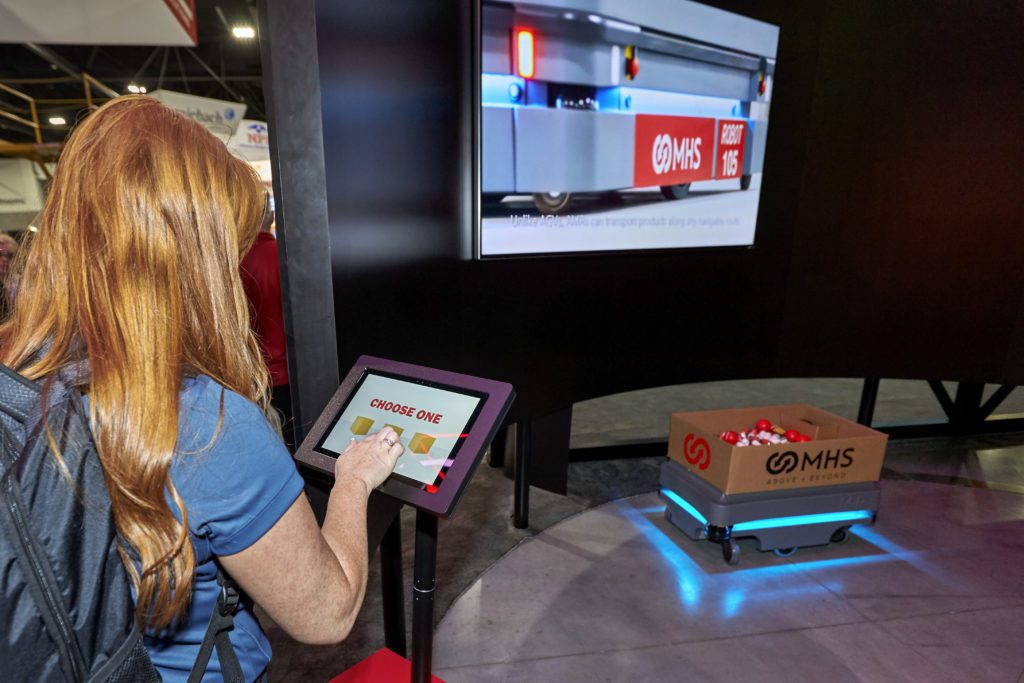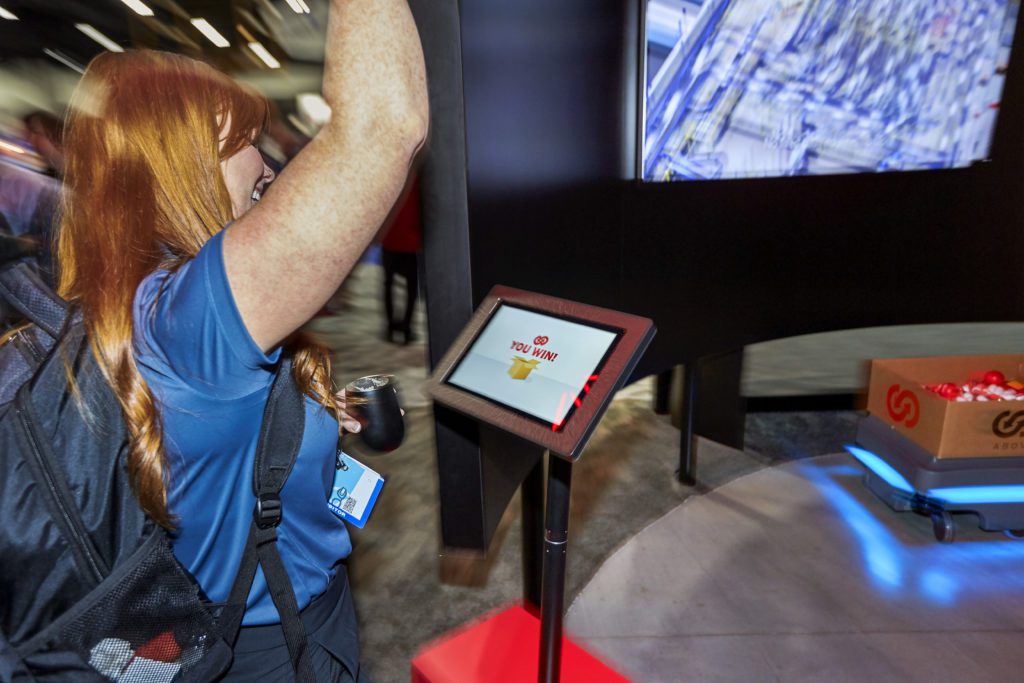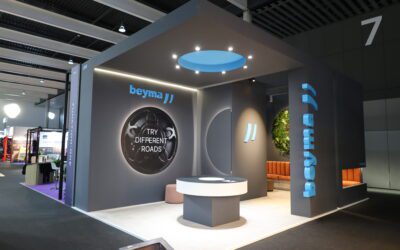
How to use gamification in your trade show exhibit to drive engagement and build community.
Who would have thought a show about chess would draw 62 million viewers in its first 28 days? I admit I haven’t watched the Queen’s Gambit, but I keep hearing people say they never knew chess could be so interesting. Is it simply chess that’s fascinating? Is it the quest to be the best chess player in the world? What is driving people to watch this show?
And then it clicked – it’s all of it: the game, the strategy, the competition, the challenge. Games are universal – everyone has a game they love. For me, it’s hockey, but for you, it could be poker or Monopoly or Mario Kart (ok, all of these are still me…)
What is it about games that we all love so much? More importantly, how can exhibitors tap into this excitement to boost the attendee experience?
Is it the butler in the kitchen with the candlestick or the attendee in your exhibit?
What exactly is gamification?
Long story short, it’s taking serious, non-game scenarios and adding game-like elements to give them a fun spin.
Gamification is all over daily life. Just open the Starbucks app – it’s like Mario Bros., coffee edition. They have taken the dull task of paying for coffee and turned it into a race to collect stars (i.e., coins). You get to select your level and rewards by choosing payment options; use a Starbucks Visa card for a high score (more stars) or your debit card to slide by (fewer stars.)
Just like Mario and Luigi, once you hit the century mark on gold coins, you get a free life or, in this case, Pumpkin Spice Latte (sorry, if this makes you miss your favorite drink!)
Why you want to own Park Place
Social media feeds are full of people who miss the communities that live events build. So do we, friends, so do we!
According to the IAEE Decision to Attend study, the top 3 things that attract attendees are:
- Content
- Location
- Networking
Location is moot for the time being. Most of us are in a home office or on our couches (it can’t just be us, right?), but 76% of attendees are still interested in networking. Without hallway conversations or exhibit hall happy hours, there is a void to fill.
QUESTION: What motivates someone at home to spend more time in front of a screen interacting with people they may not know?
ANSWER: You guessed it, gamification
Think about game shows. Why have they been around so long? What draws people to watch? Why would someone want to participate? One word, competition. Whether it’s the idea of working towards a common goal or the prospect of a killer prize, lighthearted competition brings together people even when they’re apart.
Games create the community we all miss. Not only at an event, but between events too. Bonds formed as part of a team or while racing to the finish line create deeper relationships. The higher quality of a connection, the more likely someone is to maintain those connections. They’ll continue to engage with your brand and one another long after the event is over.
Going from checkers to chess, how do these pieces move?
If you’ve read this far, you’re on board with gamification. So how do you launch your strategy?
Don’t get lost in the fun part, and definitely don’t develop a game for the sake of a game. It’s essential to have a solid strategy. Always remember the competition should reinforce your event objectives.
Start by asking some basic questions:
- What event objectives need support?
- Where do you need to drive people?
- Are you highlighting a new product or service?
- What does success look like?
Now it’s time for the fun stuff! Brainstorm a catchy name, messaging, content, and of course, rewards. Other areas to consider include:
- Hosts: Do you need someone to lead the game? If the answer is yes, select a leader that is energetic and exciting. Don’t be afraid to outsource this!
- Technology: Can this be done through your current platform, or do you need other tools? Whatever you need, make sure it’s easy to use, easy to access, and you have a way to measure success.
- Rules: Pure fact, games need guidelines. Don’t forget to create a clear set of rules. Your purpose is to build meaningful interactions, not have people blow through tasks like Chutes and Ladders.
Building community should also be rooted in shared interests. Give thought to how your audience likes to network. Should your game be tied back to your industry or linked to something entirely different? Software engineers might be motivated by a puzzle, creatives may want to participate in art contests, and HR managers could want a good old-fashioned scavenger hunt.

Winner winner, chicken dinner.
Have you ever played a homemade game without rules or a clear path to winning – don’t be THAT game!
You wouldn’t approach an exhibit program without understanding key metrics or ROI. Gamification shouldn’t be any different, but what are you measuring?
Think about it this way. Attendees in your booth are the cream of the crop. They are your most engaged audiences; maximize your time with them! How will you keep them in your space? Focus on increasing dwell time, a key measurement in understanding intent to purchase.
As you think about the attendee journey, here are a few things to ponder:
- Registered players – if no one is playing, something about your strategy is off. Start with a modest benchmark, knowing this will be a smaller percentage of your overall lead generation numbers.
- Average time– players need to complete the game, just not too quickly.
- Winners – you don’t want the game to be so hard that no one wins! Fun is at the core of all of this. If nobody comes out on top, your theme and objectives are not aligning with the games. Plus, your message may fall flat on disappointed attendees.
- Social Shares – understanding reach is critical. Measure the volume of hashtag use on social media. See how many people enjoyed the game or were willing to share that they played along. Both are good to drive awareness to your exhibit for future +attendees.
Don’t forget the follow-up! It’s an important part of building your community. Make sure to ask what they thought of the game, the prizes, and the time spent. Use that feedback to improve your strategy for future events, so you score higher quality leads.
Be like Candy Crush. Keep building!
Gamification offers the potential to build on relationships between events and generate affection for your brand or organization. As we move into hybrid trade show models, consider using an in-person game that can be played online to keep the conversation (and prizes) going. Just remember that this is only one piece of the puzzle. A solid gamification strategy cannot be the glue that holds it together; it cannot save a poorly planned content strategy or lackluster presenters.
Recreating the sense of community that we all miss is possible in a virtual world, so let’s do this.
Want to play a game with us? Shoot me an email at menashej@edecorp.com
Looking for gamification ideas? Consider these options:
- Jeopardy
- Bingo
- Scavenger hunt
- Social rewards
- Virtual 5k
- Session polls
- Photo contests
- Hackathon or other custom competitions based on attendee interest (software, creative professionals)
- Unboxing (link back to EDE blog)
- https://synesthesia.it/en/15-game-and-gamification-ideas-to-boost-engagement-at-your-virtual-event/
- https://www.meetingplay.com/blog/event-gamification-examples-event-planner-guide


